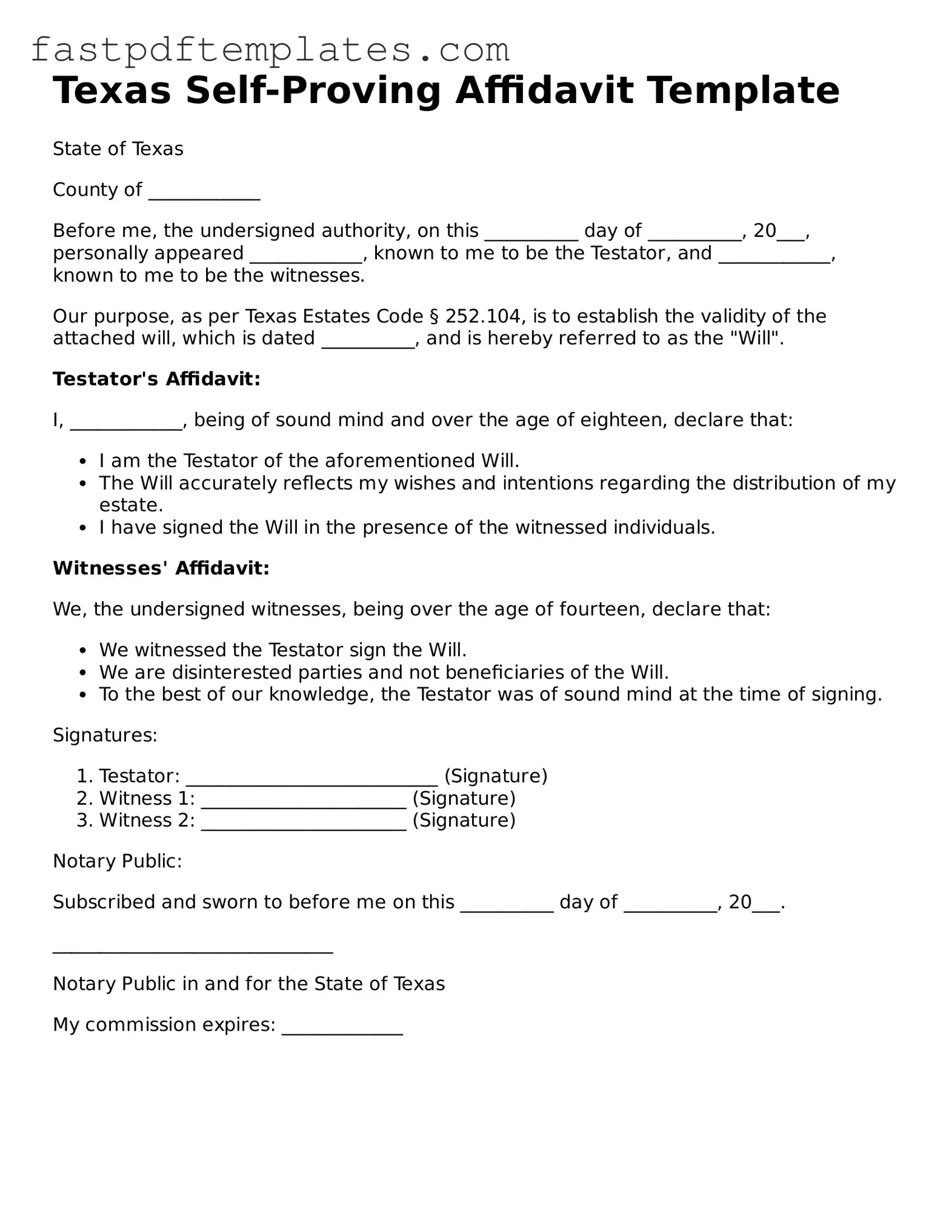Texas Self-Proving Affidavit Template
State of Texas
County of ____________
Before me, the undersigned authority, on this __________ day of __________, 20___, personally appeared ____________, known to me to be the Testator, and ____________, known to me to be the witnesses.
Our purpose, as per Texas Estates Code § 252.104, is to establish the validity of the attached will, which is dated __________, and is hereby referred to as the "Will".
Testator's Affidavit:
I, ____________, being of sound mind and over the age of eighteen, declare that:
- I am the Testator of the aforementioned Will.
- The Will accurately reflects my wishes and intentions regarding the distribution of my estate.
- I have signed the Will in the presence of the witnessed individuals.
Witnesses' Affidavit:
We, the undersigned witnesses, being over the age of fourteen, declare that:
- We witnessed the Testator sign the Will.
- We are disinterested parties and not beneficiaries of the Will.
- To the best of our knowledge, the Testator was of sound mind at the time of signing.
Signatures:
- Testator: ___________________________ (Signature)
- Witness 1: ______________________ (Signature)
- Witness 2: ______________________ (Signature)
Notary Public:
Subscribed and sworn to before me on this __________ day of __________, 20___.
______________________________
Notary Public in and for the State of Texas
My commission expires: _____________
